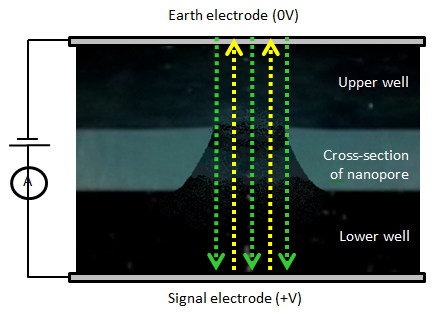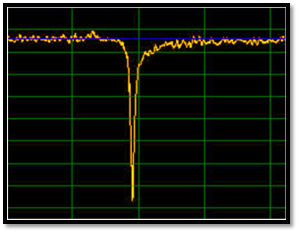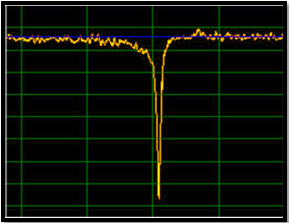Which way are the particles travelling?
A standard measurement setup is normally done with the sample (and calibration) particles loaded in the upper fluid cell. A positive bias voltage is generally applied which makes the electrode in the bottom fluid cell positively charged.
Figure 1: A cross section of the default measurement setup for TRPS. The yellow and green lines denote the cations and anions in the electrolyte moving through the nanopore respectively.
Izon uses carboxylated polystyrene nanoparticles as calibration particles which are negatively charged. When these particles are loaded in the upper fluid cell, gravity and electrophoresis will cause the particles to travel through the nanopore towards the lower fluid cell. If a pressure is applied using the VPM unit, the rate of the particles travelling to the lower fluid cell increases.
Direction of particle travel can be determined from the shape of the blockade trace. The hole of the nanopore is conical in shape which means that the top (trans) side of the nanopore is much smaller than the bottom (cis) side of the nanopore. Particles create the largest resistance at the trans side as they enter the nanopore, resulting in an asymmetric resistive pulse.
.
Above is a blockade trace for a particle going through the pore from the upper fluid cell to lower fluid cell i.e. particles are travelling downwards.
Above is a blockade trace for a particle going through the pore from lower fluid cell to upper fluid cell i.e. particles are travelling upwards.
For accurate sizing and concentration measurement, it is important that all sample and calibration particles to travel through the nanopore in the same direction.


